
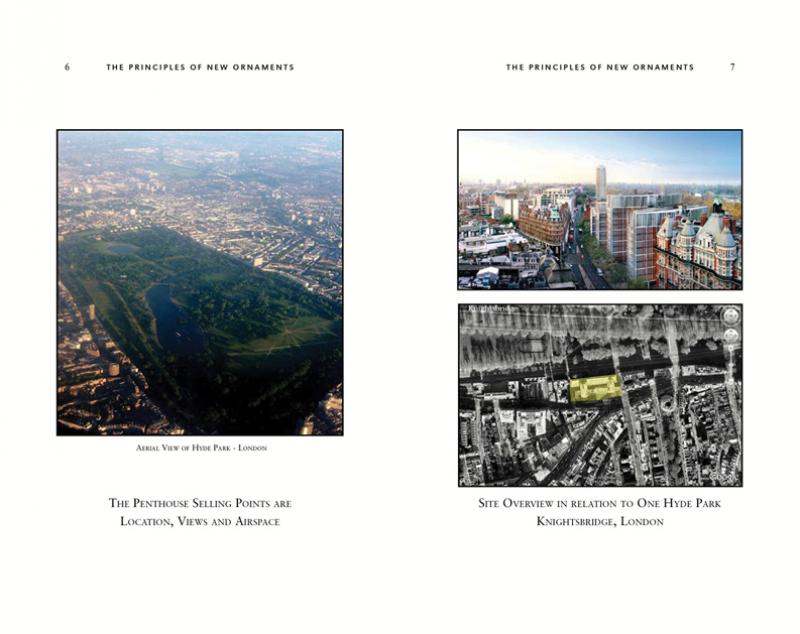
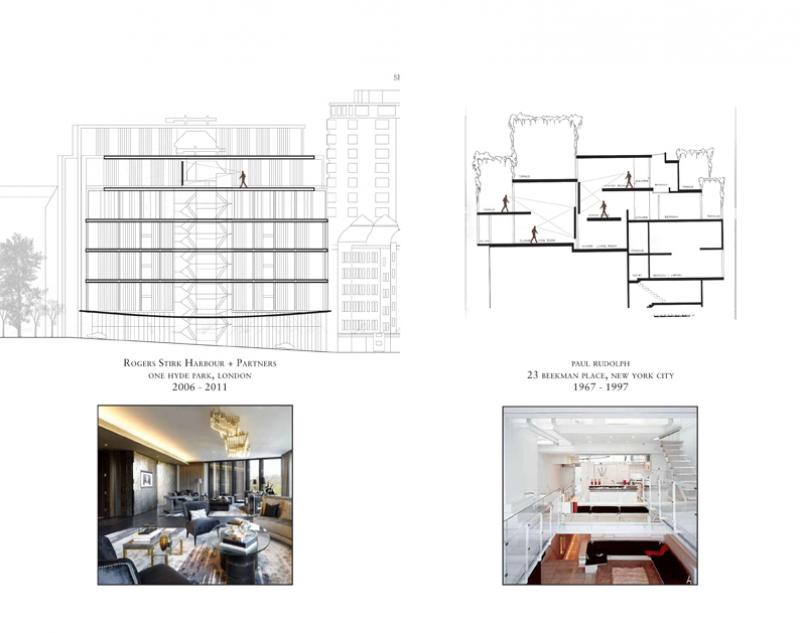
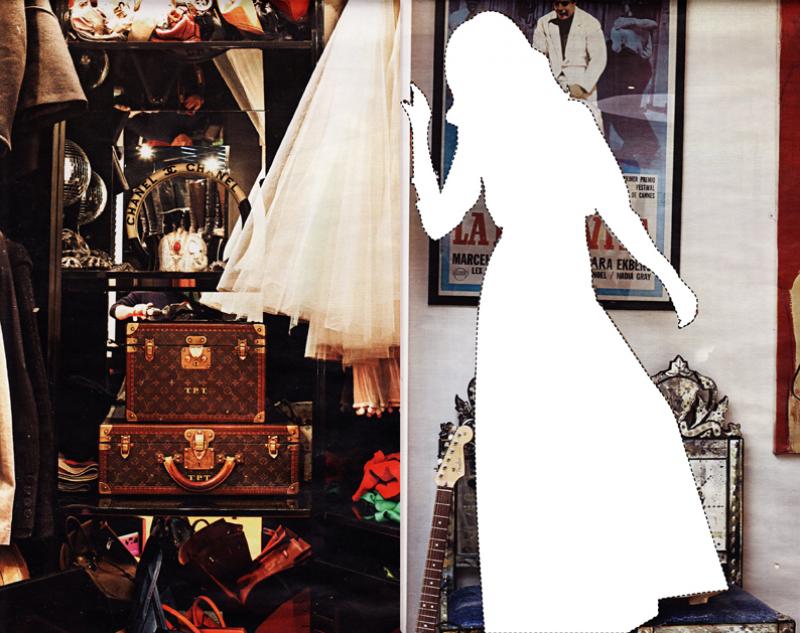
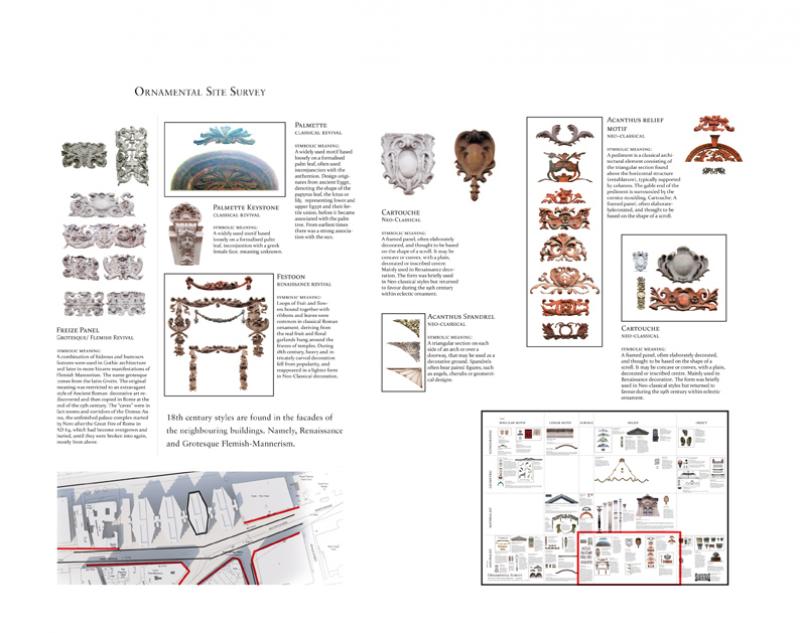
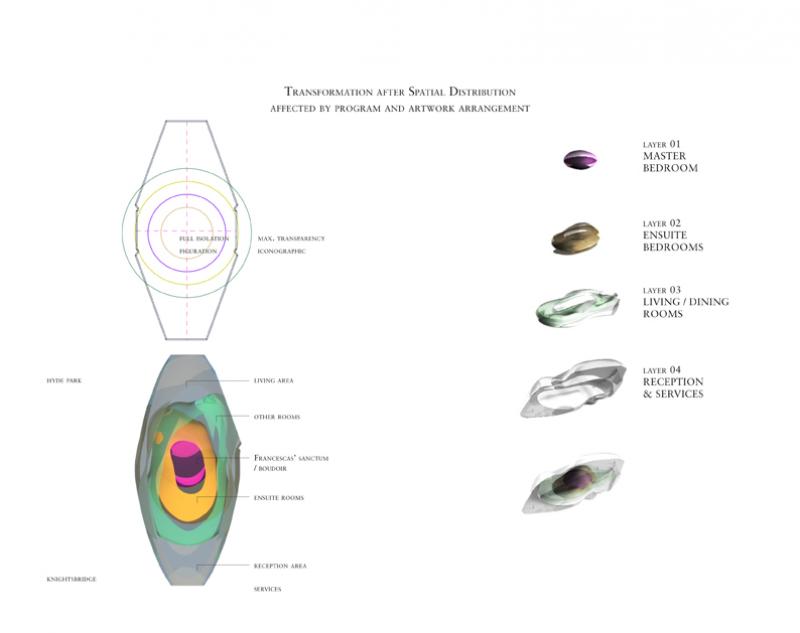
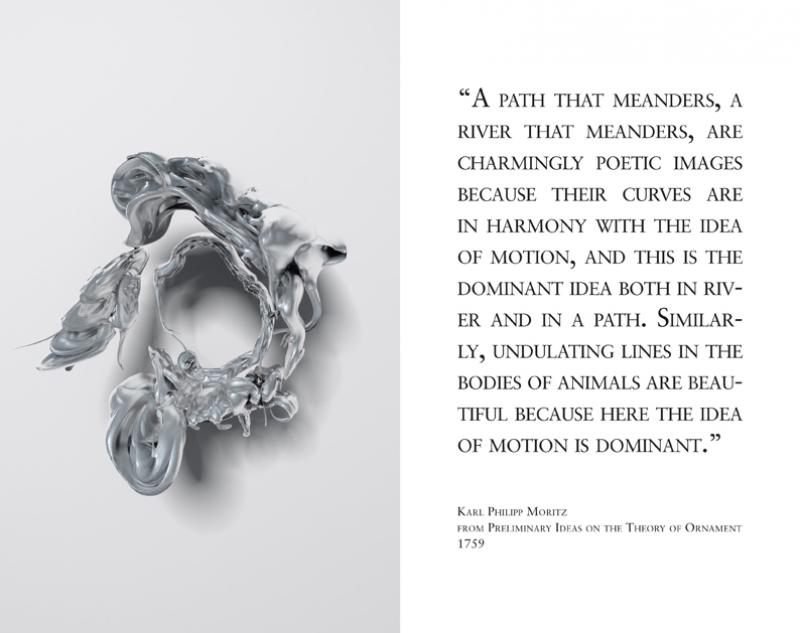
‘Virtual Obsessions’ An Architectural Portrait is an architectural portraiture for Baroness Francesca Thyssen-Bornemisza. Since 2003, she has made her name known especially for the commissioning contemporary artists, organizing collaborative works and is patron of the Venice Biennale. The project is based on principles taken from the theories of William Hogarth, The Analysis of Beauty, 1753 and Henri Focillon, in Chapter II, ‘Forms in The Realm of Space’ in The Life of Forms in Art, 1934. These theories together with the extraction of symbolism and figuration from 18th century design principles are engaged to design a high-profile penthouse located in Knightsbridge, London.
The primary function of the penthouse is to house selected artworks from her father’s and her collection forming a new abstracted residential type for art and living spaces. This convergence of art and architecture allows for me to test the theories and principles, questioning what works and what does not work to perfect and appropriate the contemporary notion of portraiture and beauty in the realm of ornament, whilst embracing the construction possibilities of today.